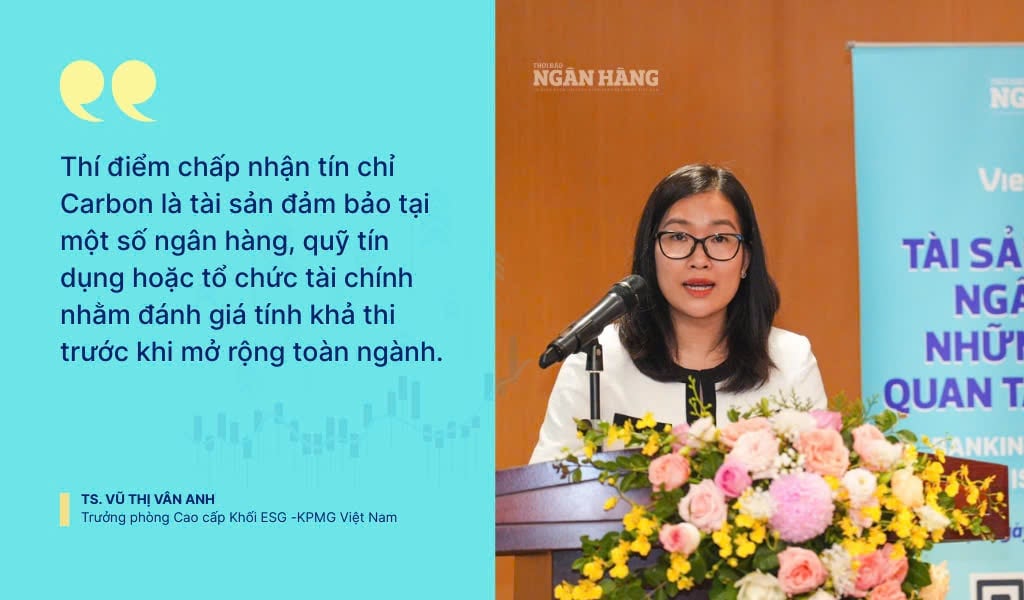 |
| Dr. Vu Thi Van Anh, Senior Manager of ESG Division - KPMG Vietnam, discussed at the Workshop |
Create a flexible, transparent and reliable market mechanism
Dr. Vu Thi Van Anh said that a tradable credit unit represents one ton of carbon dioxide (CO2) or an equivalent amount of another greenhouse gas to be reduced or removed from the Earth's atmosphere. There are currently two types of carbon credits: emission reduction credits and emission removal credits. The mechanism of using carbon credits to offset carbon is implemented outside the enterprise's value chain and is counted towards the emission reduction target. In addition, carbon credits contribute to the emission process or portfolio or broader sustainable development goals.
On that basis, carbon credits are meaningful in reducing greenhouse gas emissions and supporting global commitments; creating a flexible, transparent and trustworthy market mechanism; encouraging and promoting sustainable behaviors to motivate environmental protection projects and initiatives to reduce greenhouse gas emissions towards sustainable development goals; enhancing economic efficiency because carbon credits are considered an effective policy tool to reduce greenhouse gas emissions at the lowest cost, enhancing transparency and efficiency in greenhouse gas management.
With many important meanings, Dr. Vu Thi Van Anh said that Vietnam has issued Decree 06/2022/ND-CP, planning to pilot a carbon credit trading floor in 2025 and officially operate it in 2028. As of 2024, Vietnam has about more than 300 projects participating in the international carbon market, mainly in the fields of renewable energy and forest protection.
However, the cost of carbon credit transactions in Vietnam is quite high. The average cost of developing and verifying a carbon credit project that meets international standards ranges from 100,000 to 500,000 USD/project, causing difficulties for small and medium enterprises.
It is forecasted that by 2030, Vietnamese enterprises will need to purchase about 50 to 60 million carbon credits per year to meet domestic and export emission reduction requirements. Meanwhile, according to a survey by the Ministry of Natural Resources and Environment, by 2023, only about 15% of large enterprises and 3% of small and medium enterprises will have full performance and know how to operate and participate in the carbon credit market, Dr. Vu Thi Van Anh shared.
There are currently a number of countries using carbon credits as collateral. According to Dr. Vu Thi Van Anh, according to Thailand's Business Security Law, the country is considering recognizing carbon credits as collateral for financial transactions. The Ministry of Business Development has discussed with relevant agencies to promote carbon credits as collateral for loans, especially for climate change adaptation investment projects, providing a way to measure and manage climate-related risks. Meanwhile, in the European market, EUA is the official emission unit traded in the EU's emissions trading system. EUAs are recognized as financial instruments under the Markets in Financial Instruments Directive allowing trading on exchanges and the use of derivative financial transactions. The European Central Bank (ECB) is implementing measures to reduce climate risks in credit activities including limiting the use of high-emission assets as collateral.
Ensure feasibility before widespread deployment
From the above two models, according to Dr. Vu Thi Van Anh, there are some experiences in the process of accepting carbon as a collateral asset in Vietnam. For example, Vietnam cannot use carbon credits as collateral without a stable carbon market, clear standards and credit value accepted by the market. Prepare a legal corridor in parallel with carbon credits with the same legal status as normal financial assets such as stocks and bonds; it is necessary to promote a mandatory and voluntary market; there must be a mechanism for credit value appraisal and thorough risk assessment before accepting collateral.
If carbon credits are only considered as a single financial instrument, the possibility of success will be low; it needs to be integrated into the overall green economic development strategy. From the practice of the European market, it is also clear that it is necessary to build a solid legal foundation from the beginning; monitor and make the market transparent, avoid fraudulent acts and protect the value of the carbon credit market; encourage green finance through the free market, allow market mechanisms; strengthen intra-bloc and international cooperation so that the carbon credit market can truly operate effectively and minimize risks.
In order to prepare for carbon credits to become a type of collateral, Dr. Vu Thi Van Anh affirmed that state management agencies play a key role in creating a solid legal corridor. This requires perfecting the legal framework through research and promulgation of specific regulations, clarifying the legal basis for the use of carbon credits as collateral. In addition, supplementing supporting legal documents, such as amending the Law on Credit Institutions and issuing guiding circulars, is extremely necessary.
Another important factor is to develop a pricing and risk assessment mechanism for this new asset class, including establishing pricing principles in line with international market practices; developing criteria for classifying valid carbon credits and determining appropriate discount rates when using them as collateral. To ensure feasibility before widespread implementation, the management agency should conduct a pilot at a number of credit institutions. Finally, the coordination of the construction and use of a centralized database, connected to the national carbon exchange and credit system, will create a transparent and efficient platform for carbon credit management and trading.
Along with the efforts of the management agency, Dr. Vu Thi Van Anh said that commercial banks also need to proactively improve their capacity to effectively manage carbon credits as a type of collateral. This includes establishing a specialized department or cooperating with specialized units to conduct appraisals of the value and legality of carbon credits. Training of credit officers and risk management on carbon markets, pricing methods and related legal aspects also needs to be focused on.
To integrate carbon credits into credit activities, banks need to develop separate credit policies for green assets and develop green credit products in which carbon credits can be accepted as collateral. Credit contracts need to be designed with clear terms on ownership, valuation methods, liquidation procedures and risk management for carbon credits. Establishing a separate risk assessment framework, based on factors such as price volatility, liquidity and legality of carbon credits, is necessary to ensure the safety of credit activities. In addition, building a credit insurance mechanism or cooperating with green credit guarantee funds, along with strengthening international cooperation with investment funds and carbon credit trading floors, will facilitate the transfer and recovery of collateral when necessary.
"Completing the legal framework not only helps banks and businesses feel more secure when accessing new types of assets, but also creates momentum to promote green finance and the digital economy - in line with the trend of globalization and sustainable development," affirmed Dr. Vu Thi Van Anh.
Source: https://thoibaonganhang.vn/nghien-cuu-thi-diem-cong-nhan-tin-chi-carbon-la-ta-trien-khai-rong-rai-163462.html


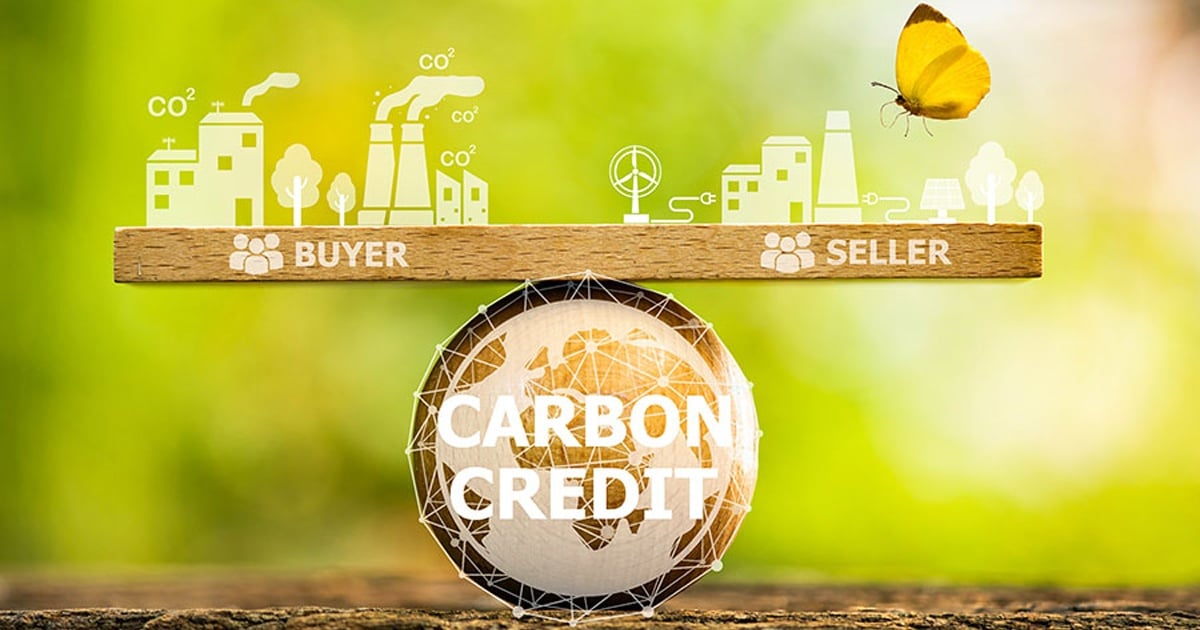

![[Photo] Sparkling lanterns to celebrate Vesak 2025](https://vphoto.vietnam.vn/thumb/1200x675/vietnam/resource/IMAGE/2025/5/7/a6c8ff3bef964a2f90c6fab80ae197c3)





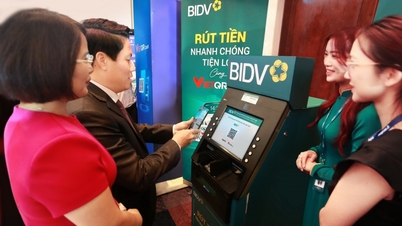
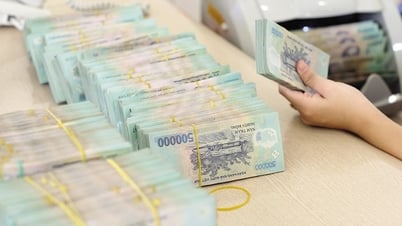







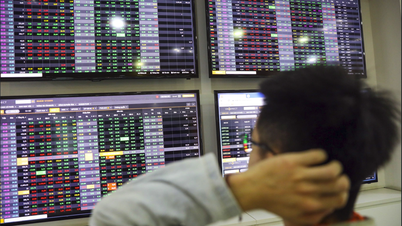

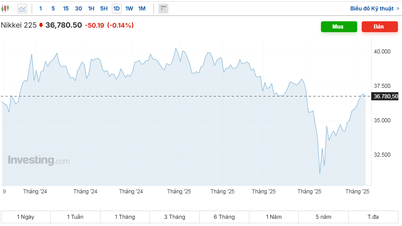


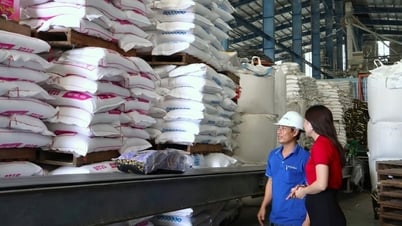
![[Photo] Prime Minister Pham Minh Chinh chairs meeting to review preparations for trade negotiations with the United States](https://vphoto.vietnam.vn/thumb/1200x675/vietnam/resource/IMAGE/2025/5/6/1edc3a9bab5e48db95318758f019b99b)

























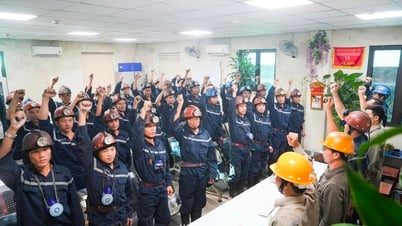















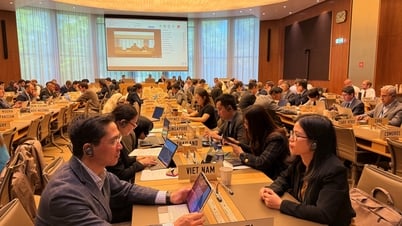























Comment (0)